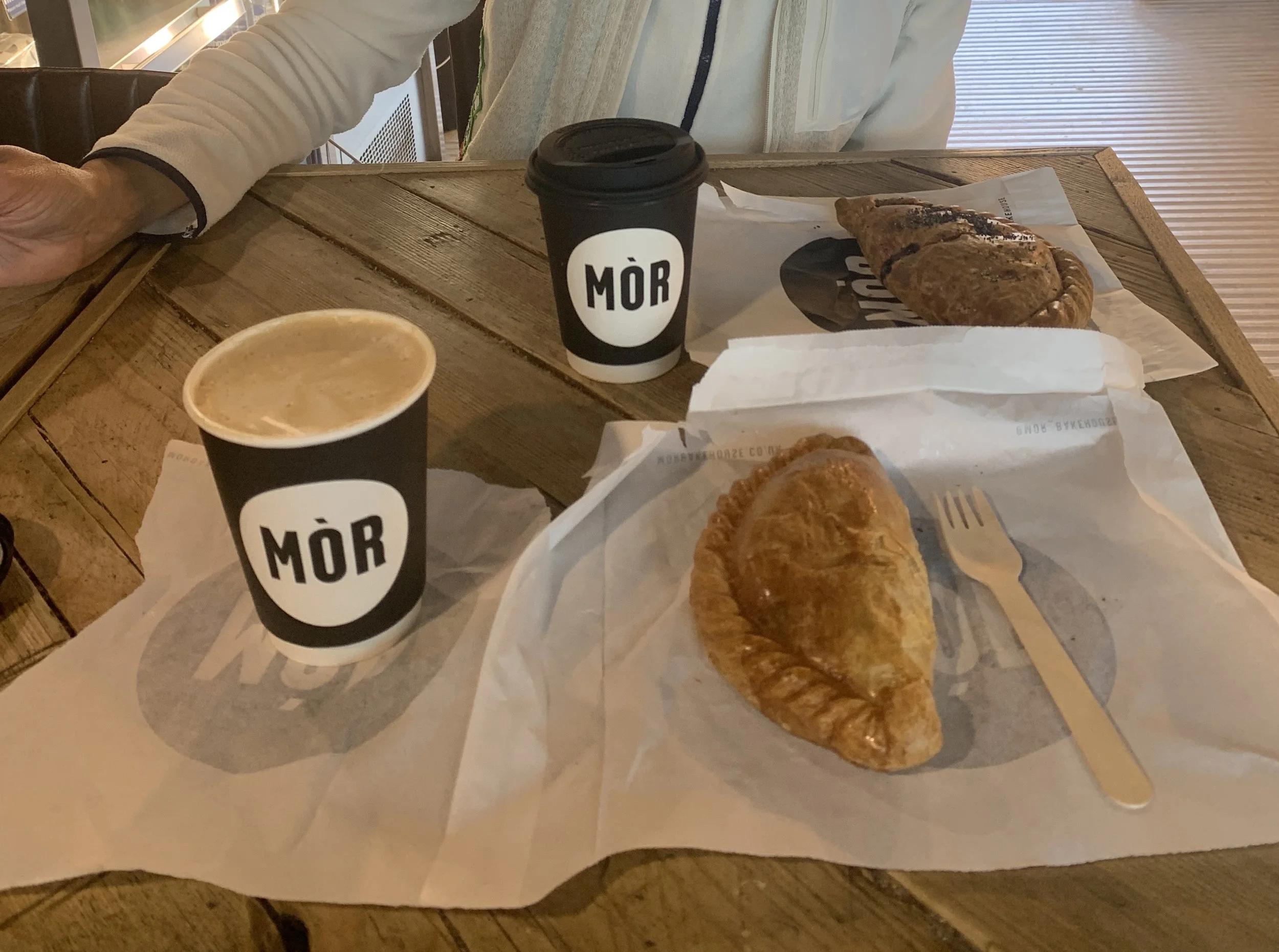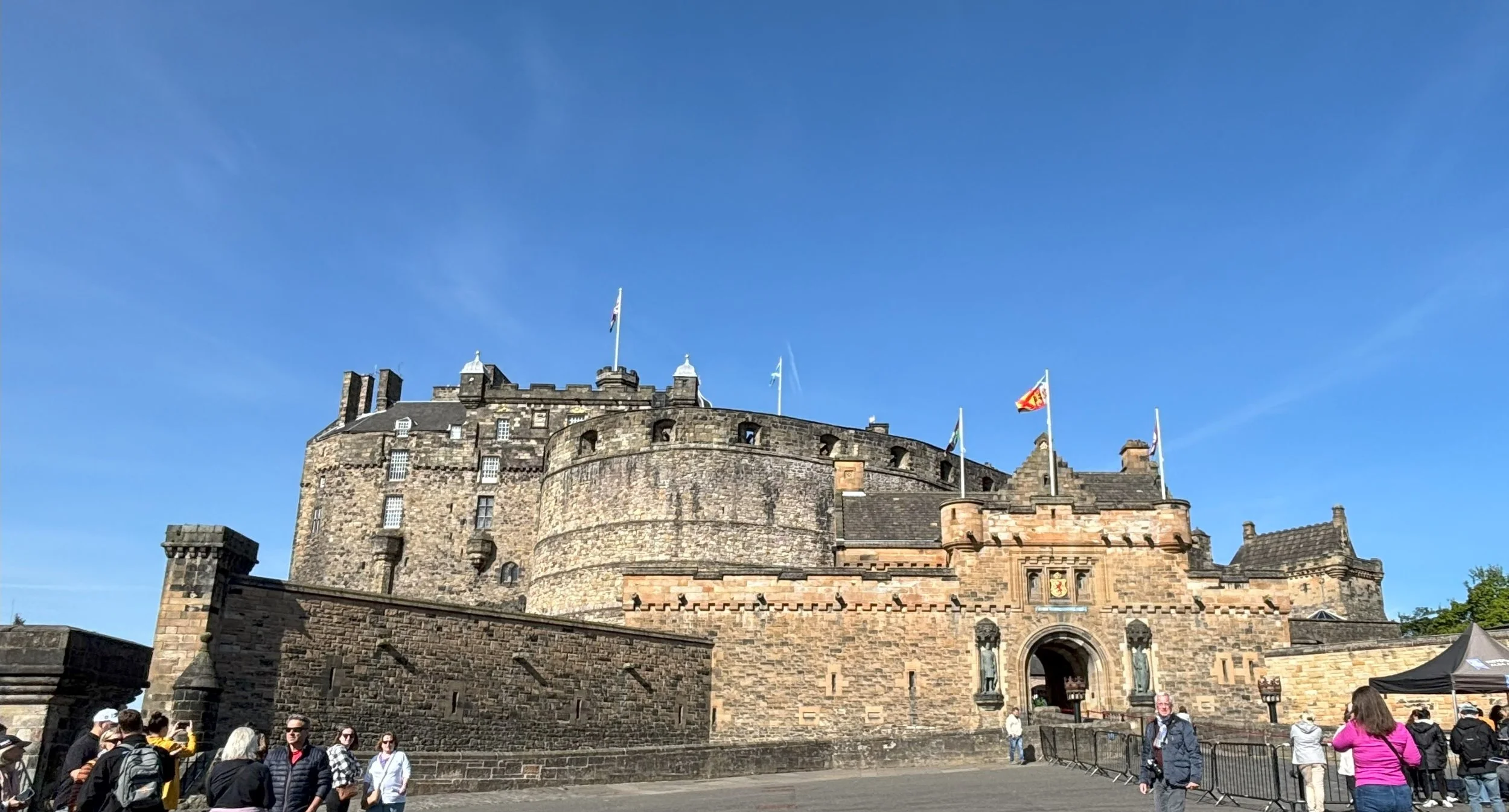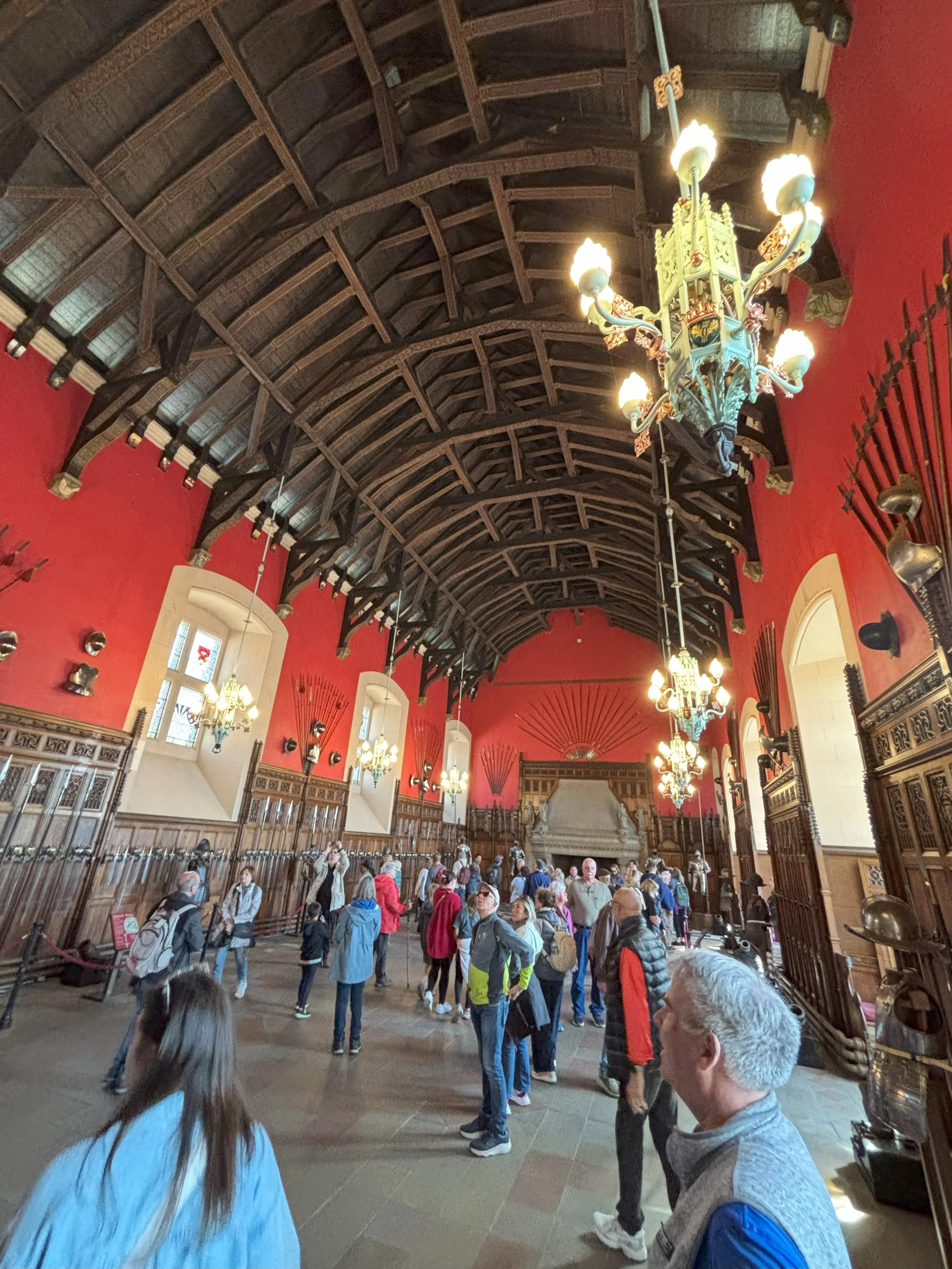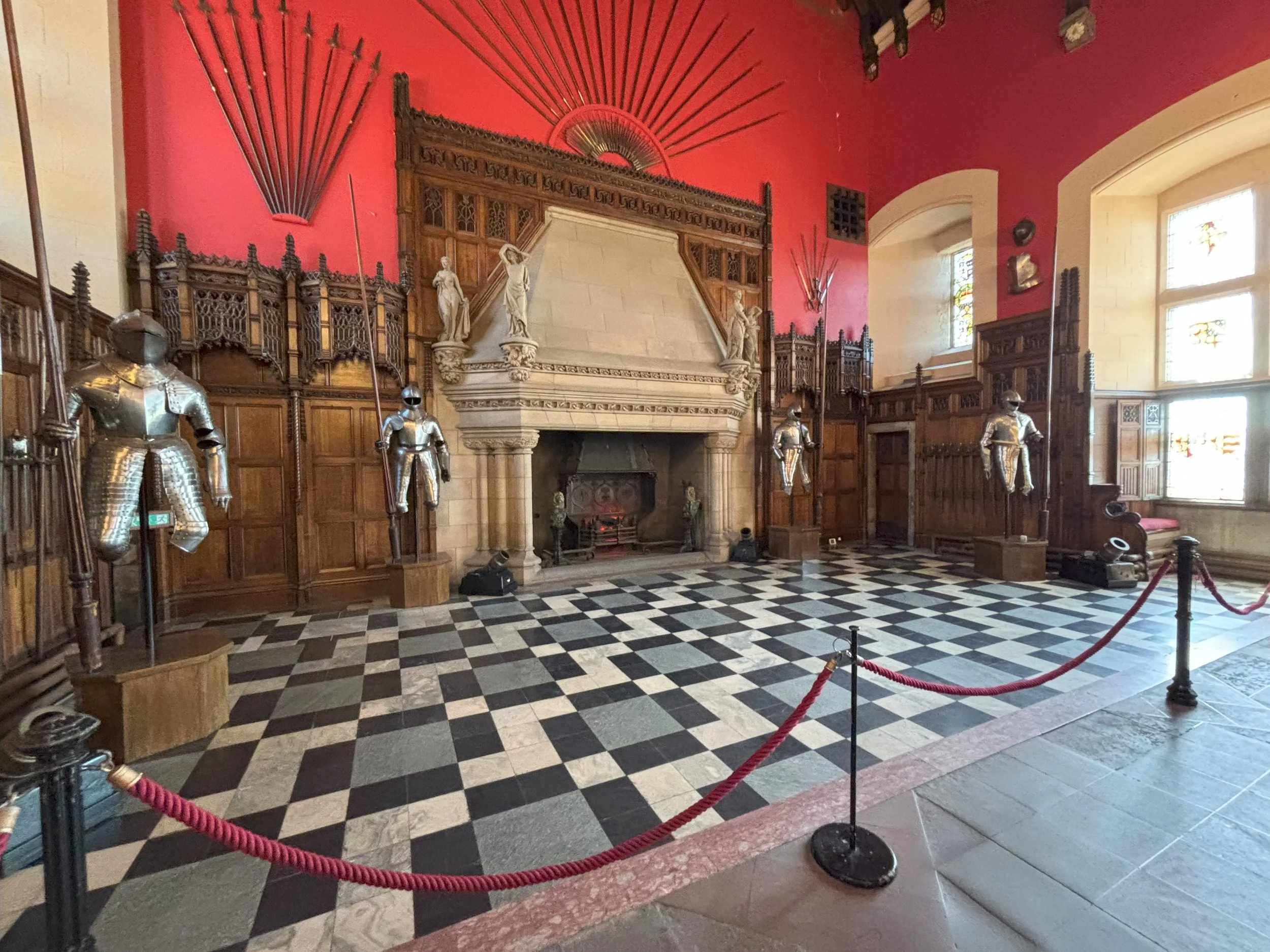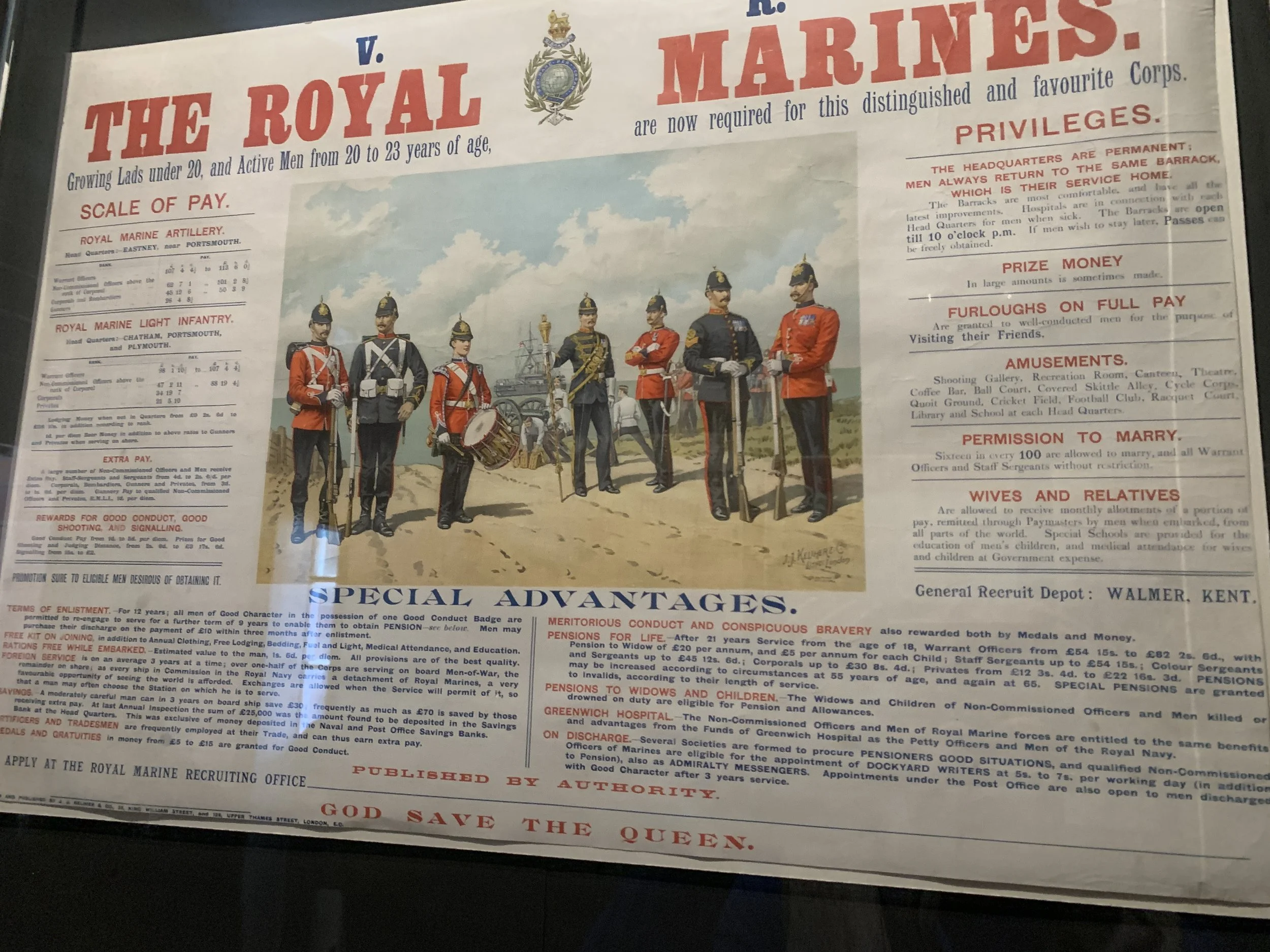Edinburgh Castle
Our first full day in Scotland, we planned to get to Edinburgh Castle when it opened, so we wanted a quick and easy breakfast. A short walk from the room we found a place called Mor Bakehouse. It’s a small place with breakfast foods and sandwiches. We chose a couple of pasties, mine had a spicy beef with chopped vegetables. There is a haggis one for those who want to immerse themselves deeper into Scottish culture. One of these warmed up with a coffee Americano is a perfect start to the day.
Edinburgh Castle was about a mile away from the hotel, and on a glorious day it was an easy walk. The castle is a treasure trove of history going back 1000 years. In the 15th and 16th centuries, it was one of the Scottish royals residences. You can set your watch by the one o’clock gun, see the contributions of Scotland’s military, and behold the Scottish crown jewels.
A word of warning, as you will read in the Scotland page, the Stone of Scone, used during coronations, is no longer on display in the castle. It was moved to the Perth Museum in 2024.
There are a number of stories you will read and hear as you walk about the castle.
For example, the picture to the left is of the great hall. One event said to have occurred here is the legend of the Black Dinner, which tells of the murder of William, the 6th Earl of Douglas, 16 years old, and his younger brother. The Douglas family were powerful, who won favor under Robert the Bruce. By 1440, they were also very rich. The legend has it they were invited to the great hall to dine with the 10 year old, King James II. The three boys were getting along famously, until a signal was given and armed men seized the boys. The boy king cried and unsuccessfully begged for their release. The boys were dragged to Castle hill and beheaded. As it happens, the boys great uncle, James Douglas, inherited the earldom. If this is true, that two guests enjoying the king’s hospitality, could be killed, and the assailants get away with it, is real life “red wedding” stuff.
To the right is the huge fireplace in the hall.
There is an iron barred opening to the right of the fireplace for a peephole called a laird’s lug. A place the King could eavesdrop on his guests. When Mikhael Gorbachev visited in 1984, the KGB asked that it be bricked up.
There are two museums housed within the castle devoted to the Scots contribution to the United Kingdom’s military; especially those of the Royal Scots Dragoon Guards and the Royal Scots Regiment.
The museums are stuffed with artifacts, weapons, and uniforms from throughout the centuries; retelling the glorious and bloody histories of various campaigns. Look for the Imperial Eagle of Napoleon’s 45th ‘Invincibles’, captured by Sergeant Ewart at Waterloo.
St. Margaret’s Chapel
There is a small building, said to be the oldest in the castle, if not in Edinburgh, built in 1130. David I, built this private royal chapel and dedicated it to his mother, Queen Margaret, later Saint Margaret. The building was the only one left standing, when King Robert Bruce ordered the castle made unusable for the English, in 1314. A simple building outside, inside an arch divides the room in two, a half circle for the alter on one side and a rectangular nave on the other for the royal family. There are stain glass windows, and unlike the ones in the massive cathedrals, these you can walk right up too.
Edinburgh Castle is the home of The Scottish National War Memorial.
It was first created in 1920, to honor the military personal in World War I, in later years for the fallen in World War 2 and other conflicts. Quoting from the official souvenir guide, “Here the enormous contributions of Scotland’s 12 regiments and the other corps and services are recorded. Beyond lies the shire, focused on the steel casket containing the complete roll of Honor of the Scottish dead.” The memorial is a quiet and solemn place of remembrance. No photos are allowed.
